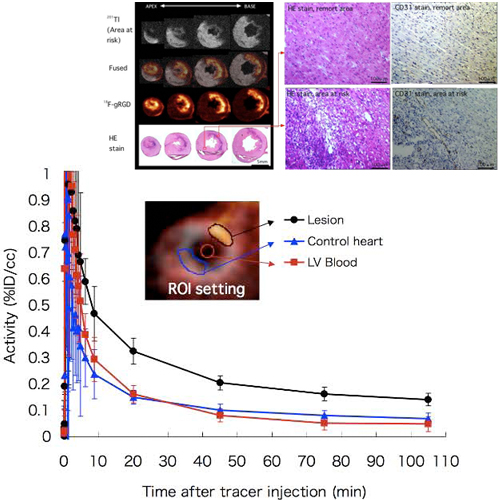Assessment of αvβ3 Integrin Expression after Myocarcdial Infarction by Positron Emission Tomography
06-Feb-2008
Cardiovascular Research, 2008, doi:10.1093/cvr/cvn033, 1-37 published on 06.02.2008
Cardiovascular Research, online article
The purpose of this study was to determine the feasibility of a new positron emission tomography (PET) imaging approach using a 18F-labeled αvβ3 integrin antagonist (18F-Galacto-RGD) to monitor the integrin expression after myocardial infarction. METHODS: Male Wister rats were subjected to 20 min of transient left coronary artery occlusion followed by reperfusion. Autoradiographic analysis and in-vivo PET imaging were used to determine myocardial 18F-Galacto-RGD uptake at different time points following reperfusion. RESULTS: PET imaging and autoradiography demonstrated no significant focal myocardial 18F-Galacto-RGD uptake in non-operated control rats and at day 1 after reperfusion. However, focal accumulation in the infarct area started at day 3 (uptake ratio = 1.91 ± 0.22 vs remote myocardium), peaked between 1 (3.43 ± 0.57) and 3 weeks (3.43 ± 0.95), and decreased to 1.96 ± 0.40 at 6 months after reperfusion. Pretreatment with αvβ3 integrin antagonist c(-RGDfV-) significantly decreased tracer uptake, indicating the specificity of tracer uptake. The time course of focal tracer uptake paralleled vascular density as measured by CD31 immunohistochemical analysis. CONCLUSION: Regional 18F-Galacto-RGD accumulation suggests up-regulation of αvβ3 integrin expression after myocardial infarction, which peaks between 1 and 3 weeks and remains detectable until 6 months after reperfusion. This new PET tracer is promising for the monitoring of myocardial repair processes.











